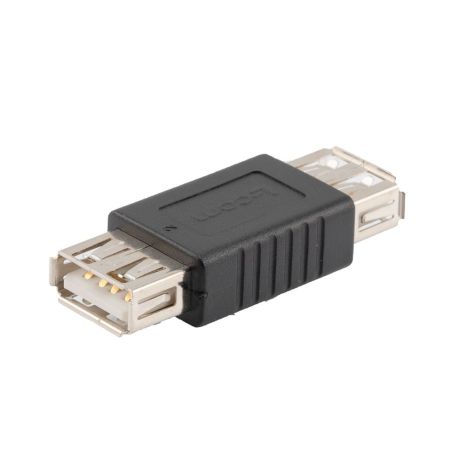L-com USB 2.0 Adapter Coupler - Shielded - Type A Female Plug to Type A Female
| Quantity Discount Pricing | |||
|---|---|---|---|
| 1-9 | 10-24 | 25-49 | 50+ |
| $7.89 | $7.39 | $7.19 | $7.10 |
Quantity Available: 0
L-com USB 2.0 Adapter Coupler - Shielded - Type A Female Plug to Type A Female
These L-com U2C000 series USB adapters and couplers provide an economical way for users to solve gender and connector type mismatches among standard USB connectors. They can also be used to bridge two cables. It is not always necessary to change cables if the connectors don't line up! Featuring a durable, fully-molded design with internal shielding that protects signals from EMI/RFI. 30um gold contact plating provides many reliable mating cycles. Socket saver types extend the life of expensive and irreplaceable cables and ports by taking the abuse of frequent mating instead of the valuable device. The low profile design reduces leverage strain on overstressed computer ports and cables. Order online today.
Features:
- Connector A: USB 2.0 Type A Female
- Connector B: USB 2.0 Type A Female
- Plastic Body
- Gold Plated
Q: What’s the difference between the different USB versions?
- USB 1.1
- Released in 1998
- Specifies max data rates of 12 Mbit/s (Full Speed)
- Mostly used on devices such as keyboards mice joysticks printers scanners.
- Still used by some devices that don't need faster data transfer rates.
- USB 2.0
- Released in 2000
- Specifies max data rates of 480 Mbit/s (Hi-Speed)
- Compatible with USB 1.1 but some hardware designed for USB 2.0 may not work with USB 1.1 host controllers.
- USB 3.0
- Released in 2008
- Specifies max data rates of 5 Gbit/s (SuperSpeed)
- A January 2013 press release from the USB group reveals plans to update USB 3.0 to 10 Gbit/s to put it on par with Thunderbolt by mid-2013.
Q: What if I need to extend my current USB cable past the 16 foot distance limit?
A: Because passive USB cables have a distance limitation you would need an Active Extension Cable to help boost the signal coming from the source.
Q: I'm unsure what USB adapter or connector I need can you help?
A: Please click on the resource tab to see the USB connector graph. This should help identify the correct cable.
USB Connector Guide | ||
Connector Type | Picture | Common Use |
USB 2.0 A Male | Commonly plugged into the USB port on a computer | |
USB 2.0 A Female | Commonly used for extending the length of an existing USB cable. USB A Male is able to plug into this connector | |
USB 2.0 B Male | Commonly used on a printer external hard drive and other USB Devices | |
| USB 2.0 Micro Male | Commonly used on new smartphones and other USB devices | |
USB 2.0 Mini Male | Commonly used on cell phones digital cameras and GPS devices | |
USB 2.0 Mini Female | Commonly used to extend the length of an existing USB mini cable | |
USB 3.0 A Male | Commonly used on USB 3.0 devices | |
USB 3.0 B Male | Commonly used on USB 3.0 printers and other USB devices | |
USB 3.0 Micro | Commonly used on USB 3.0 hubs and other devices | |




